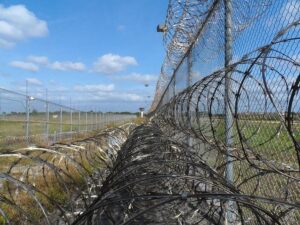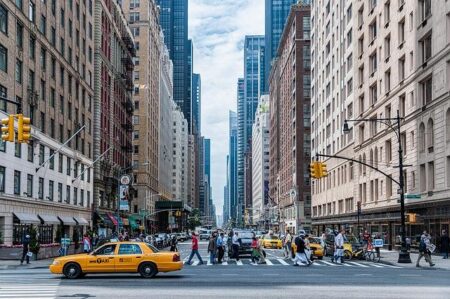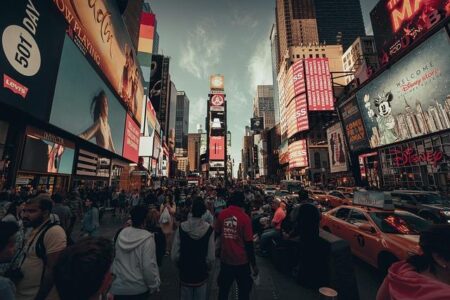Zohran Mamdani’s Mayoral Agenda: Navigating New York City’s Complex Urban Landscape
Tackling the Affordable Housing Crisis with Innovative Solutions
As Zohran Mamdani steps into his role as New York City’s mayor, addressing the persistent affordable housing shortage stands as a critical priority. Beyond simply increasing housing stock, the focus must be on cultivating vibrant, sustainable neighborhoods where residents can flourish. To achieve this, the administration should emphasize:
- Boosting investment in public housing initiatives and rental assistance programs.
- Reforming bureaucratic hurdles that slow down construction timelines, while maintaining rigorous environmental and safety safeguards.
- Collaborating closely with grassroots organizations to tailor development projects that reflect the unique needs of each borough, ensuring fairness and inclusivity.
Implementing data-centric approaches will be essential to track progress and swiftly address emerging challenges. Transparent communication and accountability must underpin these efforts to build confidence between city officials and residents. The table below outlines major obstacles alongside practical strategies to overcome them:
| Issue | Consequences | Recommended Action |
|---|---|---|
| Escalating Building Expenses | Project delays and reduced affordable housing availability | Provide subsidies for construction materials and labor costs |
| Neighborhood Displacement Due to Gentrification | Loss of affordable homes for low-income families | Strengthen rent stabilization laws and enforce inclusionary zoning policies |
| Scarcity of Developable Land | Limits on new housing projects | Convert vacant or underused properties into residential spaces |
Fostering Inclusive Governance Through Enhanced Community Participation
For policies to truly reflect the city’s diverse population, it is vital that community input is not only solicited but meaningfully incorporated at every stage of decision-making. This requires creating multiple accessible platforms that engage a wide range of residents, especially those from marginalized communities often excluded from traditional dialogues. Examples include neighborhood forums held across different boroughs, multilingual outreach efforts, and mobile-friendly digital engagement tools that facilitate broad participation.
Partnering with local leaders and organizations ensures that policy development is grounded in real-world experiences rather than abstract statistics. Additionally, establishing clear feedback loops that demonstrate how public contributions influence final decisions will build trust and encourage sustained civic involvement. The following framework highlights effective engagement methods and their measurable outcomes:
| Engagement Method | Audience | Success Indicators |
|---|---|---|
| Community Forums | Neighborhood Residents | Participation Rates, Diversity of Attendees |
| Surveys in Multiple Languages | Non-English Speaking Populations | Response Volume, Inclusivity Metrics |
| Online Feedback Platforms | Younger and Tech-Savvy Residents | Engagement Frequency, User Satisfaction Scores |
Embedding Sustainability and Climate Resilience in Urban Development
With climate change posing escalating risks to metropolitan areas, embedding environmental sustainability into city planning is imperative. The new administration must champion green infrastructure projects, expand clean public transit options, and promote resilient housing designs that minimize ecological impact while enhancing residents’ well-being. Key initiatives should include:
- Increasing urban greenery to combat heat islands and improve air quality.
- Implementing robust waste reduction programs aligned with circular economy principles.
- Expanding accessible, eco-friendly public transportation to reduce dependence on private vehicles.
- Constructing infrastructure designed to endure extreme weather events and rising sea levels.
Concrete targets can guide these efforts, as illustrated below:
| Focus Area | Short-Term Objective | Long-Term Benefit |
|---|---|---|
| Urban Green Spaces | Expand tree canopy coverage by 15% | Reduce city temperatures and support biodiversity |
| Renewable Energy Adoption | Equip 50% of municipal buildings with solar panels | Cut citywide carbon emissions by 40% |
| Public Transit Enhancement | Increase bus network coverage by 25% | Alleviate traffic congestion and lower pollution |
| Waste Management | Launch comprehensive composting citywide | Reduce landfill contributions by 30% |
Advancing Public Safety with Equity and Transparency at the Core
Establishing a safer city hinges on rebuilding trust between law enforcement and communities, particularly those historically marginalized. Prioritizing equity in public safety policies means ensuring all voices are included in shaping strategies. Transparency in policing practices and resource allocation is essential to close gaps and foster mutual understanding.
Immediate priorities should include:
- Creating empowered civilian oversight boards with authority to hold police accountable.
- Co-developing safety policies with input from neighborhood groups to reflect diverse community needs.
- Regularly publishing accessible data on stops, arrests, and use-of-force incidents to promote openness.
| Metric | Current Status | Target |
|---|---|---|
| Resolution of Community Complaints | 67% | 90% |
| Transparency in Public Safety Budget | 50% | 100% |
| Annual Community Safety Forums | 2 | 6 |
Looking Ahead: Expectations for Mamdani’s Leadership
As Zohran Mamdani prepares to lead New York City, the path forward is marked by both significant challenges and promising opportunities. Success will depend on his administration’s ability to implement inclusive, data-informed policies that address the city’s multifaceted needs. The coming months will be a critical test of translating campaign commitments into tangible improvements that uplift all New Yorkers.













